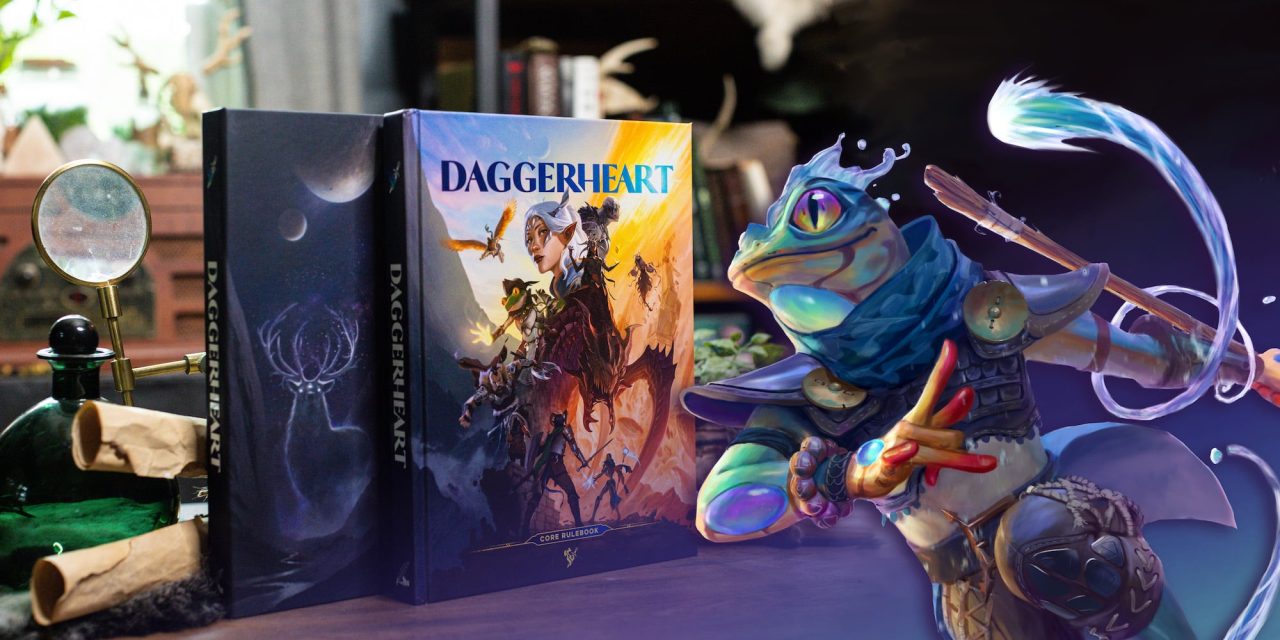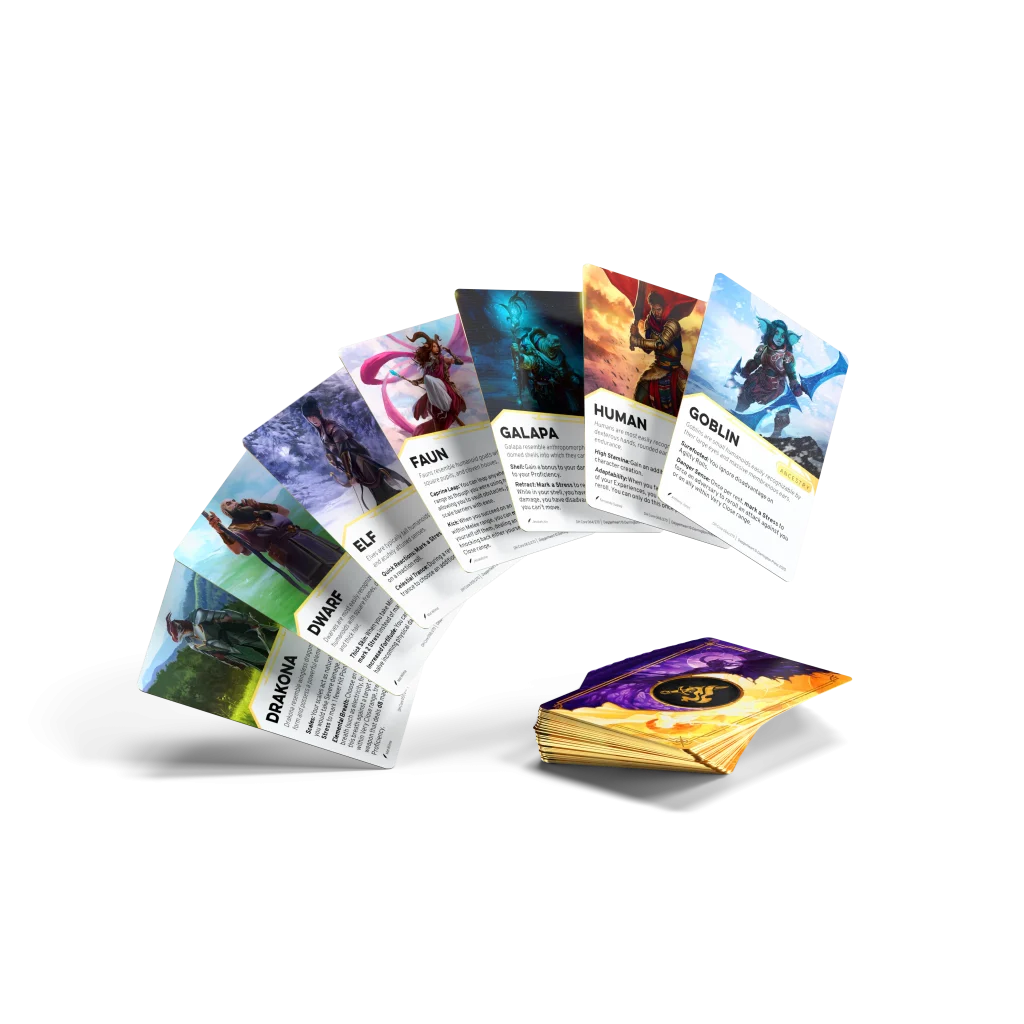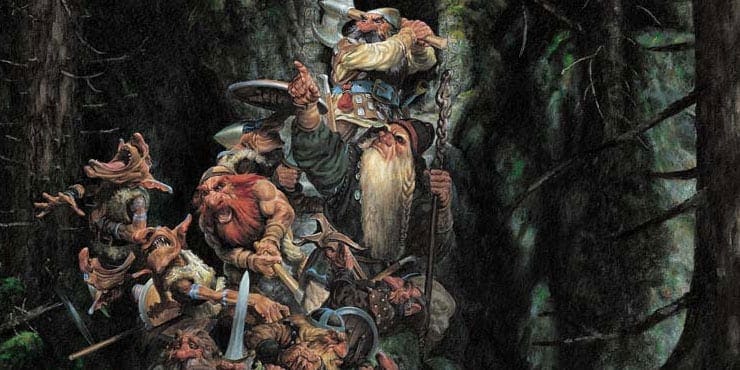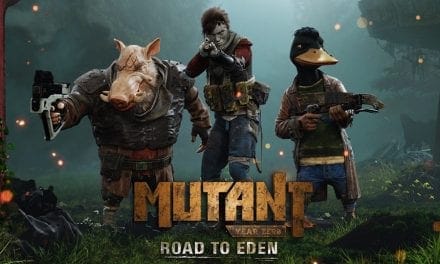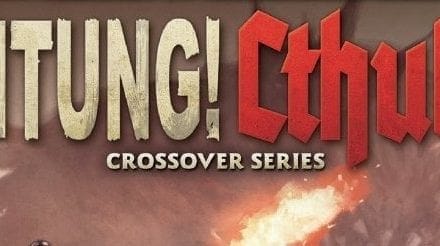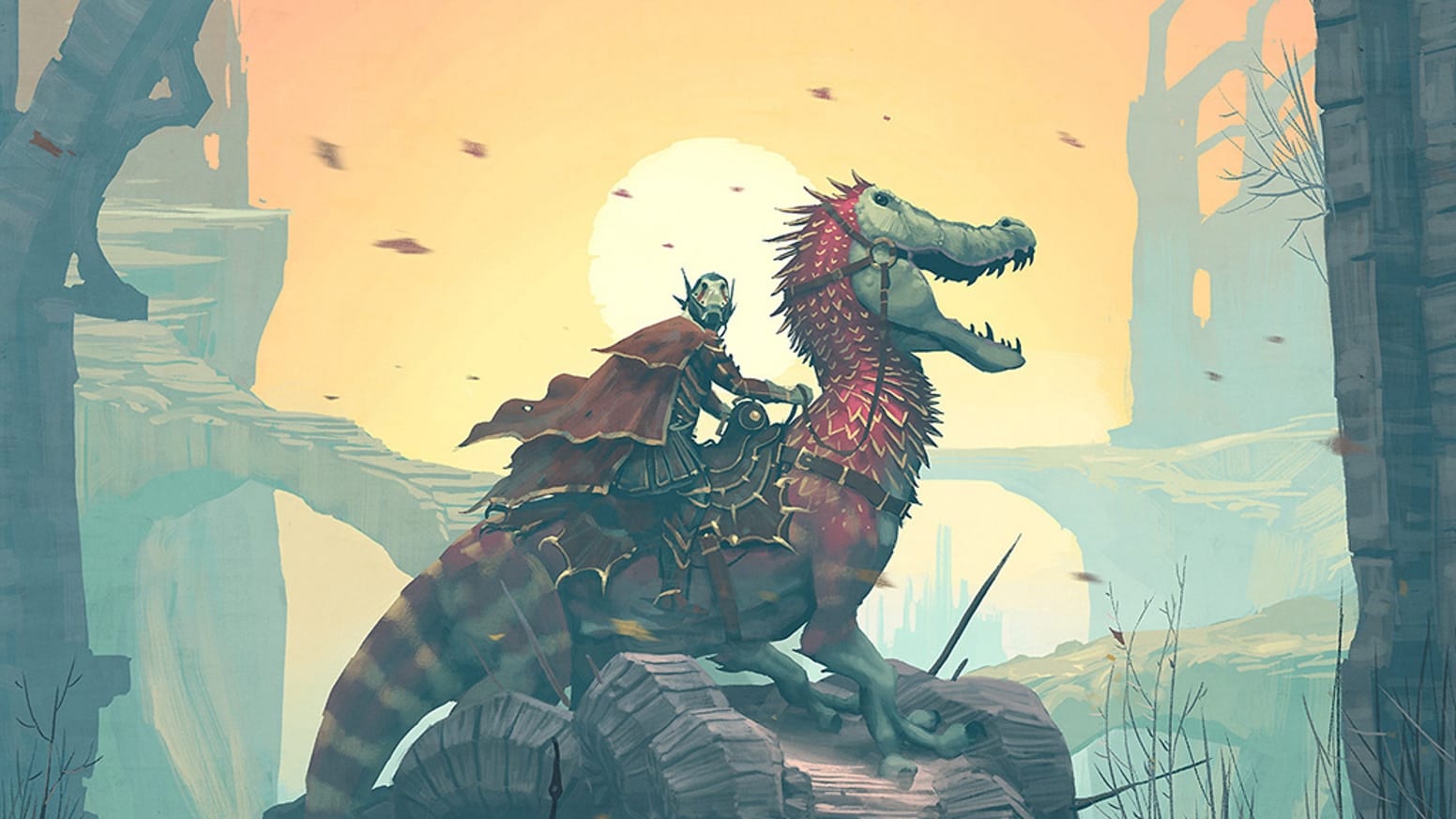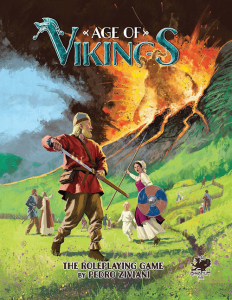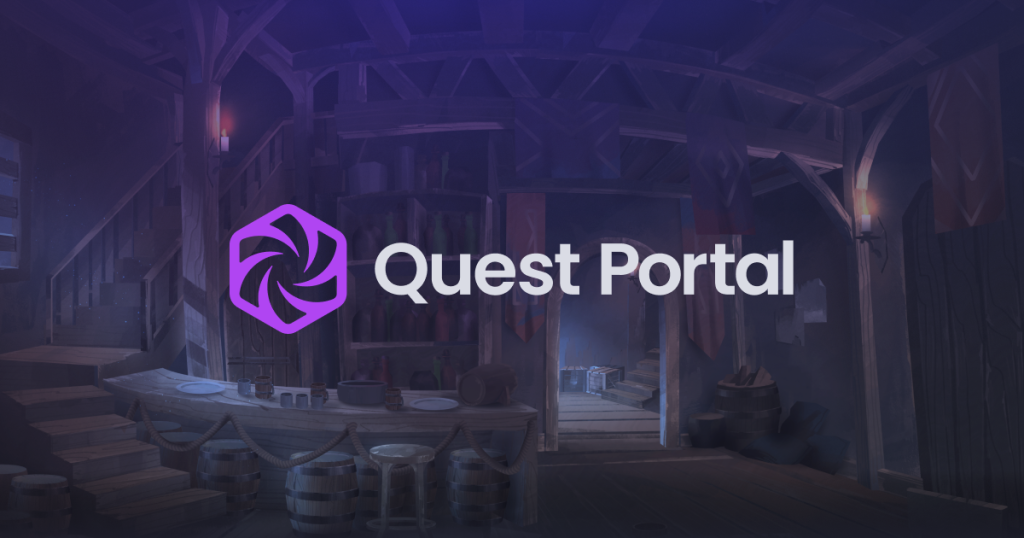Daggerheart is the system that has most people in RPG talking. Is this a game that might challenge the dominance D&D has had in the RPG sphere for decades?
When you open Daggerheart, you feel something rare in modern RPG design: a heartbeat. The Daggerheart RPG, created by Rowan Hall, Spenser Starke, Matthew Mercer (of no so little Critical Role fame), and the crew at Darrington Press, offers a world where stories matter more than spreadsheets, and dice carry emotion instead of math alone. It is both a love letter to the golden age of tabletop gaming and a quiet revolution that invites players to live between two forces: Hope and Fear.
I’ve been running a game this fall using Daggerheart, albeit my own setting called Thulera. And truth be told, I’ve never expected to experience this kind of awe and sense of wonder, almost as if I am yet again in my teens, trying out RPGs for the first time. We’re four sessions into the campaign, and although it’s not much, every session has been better than the ones before, which I credit to the game and the system.
This review dives deep into what makes Daggerheart stand apart, its mechanics, storytelling philosophy, and the living pulse at the heart of its rules.
The Philosophy Behind Daggerheart
From its opening pages, Daggerheart declares itself a fiction-first tabletop role-playing game. The book’s tone is personal and encouraging. To me, it doesn’t read like a manual; it feels more like a storyteller inviting you to sit beside him by the fire. The pages are filled with luminous art, generous white space, and a voice that speaks to you as a collaborator in a friendly way.
The designers call Daggerheart a “heroic fantasy role-playing game built on the emotions of Hope and Fear.” That premise becomes the foundation for every roll, choice, and relationship you create at the table. This focus on emotionally driven storytelling distinguishes Daggerheart from its predecessors and is what I like the most about it. It’s less about tactical optimization and character builds (as is often the case in D&D) and more about the main characters’ narrative, their experience, and how they see the world. You’re not just rolling to hit, you’re rolling to see in which direction the narrative flows, how your character feels, and how the world reacts.
The Duality Dice: Hope and Fear
At the core of Daggerheart lies its most elegant idea: the Duality Dice. Each player rolls two twelve-sided dice — one for Hope, one for Fear.
Hope represents courage, faith, and good fortune.
Fear represents doubt, danger, and the creeping shadow of fate.
You roll both dice together and add their results to meet a certain DC (as in D&D), but you also note which die rolled higher. If Hope triumphs, the success feels bright and meaningful. If Fear wins, the outcome still works, but at a cost. The GM may add their twist to the scene, introduce a dark consequence as you roll with Fear, or remind you in any other way that light always casts a shadow.
This mechanic is deceptively simple and easy to learn. Every roll becomes a moment of emotional storytelling. Hope and Fear are no longer abstract ideas; the table seems to characterize them through your characters’ actions.
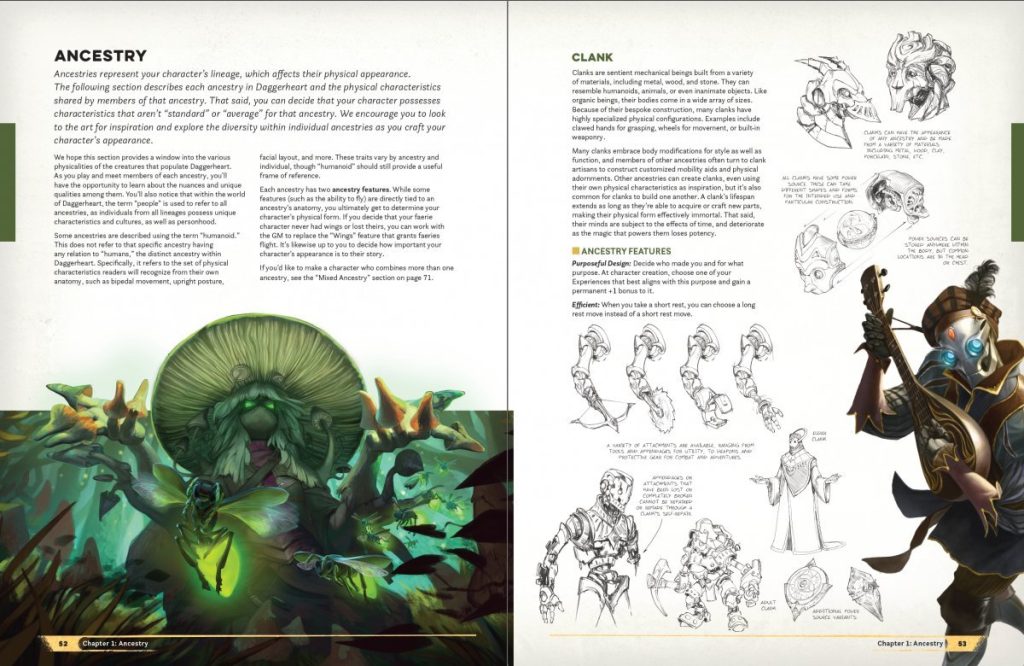
Character Creation in Daggerheart
Creating a character in Daggerheart feels like crafting a myth. You choose Ancestry, Class, and Community, but also define relationships and emotional contradictions. Every hero carries an inner struggle, and every choice echoes that tension.
Classes will sound familiar if you have ever played a fantasy RPG: Bard, Guardian, Sorcerer, Warrior, but each class has been remodeled around storytelling rather than fighting mechanics. The Bard inspires through art and truth. The Guardian’s strength comes from sacrifice. The Sorcerer’s magic reflects the chaos within their soul.
Players also use Domain Cards, physical or digital tools that represent powers, traits, and spells. This makes play tactile and fluid, bridging modern card-based design and classic role-playing immersion.
Ancestries and Communities replace the outdated notion of “race” with something ethical and expressive. You might be a Firbolg poet from the mountains or a Goblin scholar from a desert library. Each background shapes your view of the world, not your worth within it.
It is also important that the players work together, creating their characters and building them with emotional ties in mind. In other words, when you are making your character, it is not recommended that you do so alone; you can work with the rest of the group to determine how your characters know each other, who you like, and what your goal is.
I also had every player design a single location within the setting, making their ties to the world run even deeper. This helped them envision their characters and offered me a trove of hooks, adventure ideas, and ideas to make the world come even more alive in-game.
How Daggerheart Plays
Play in Daggerheart flows like a conversation. In these four sessions, my group has very often taken the reins and spent a great deal of the time talking in-character to each other, discussing events, their background stories, and their plans, and even more than in our games using different game systems. The game puts so much emphasis on character development that players spend even more time in character than before, which has often given me a front-row seat to a great and entertaining play.
The first thing you notice, if you are an avid D&D player like me, is that there’s no rigid initiative order or turn sequence. Instead, scenes unfold naturally through Moves, which are narrative actions that propel the story forward. When an outcome is uncertain, you roll the Duality Dice.
This approach eliminates mechanical clutter and creates cinematic pacing. Every roll feels like a beat in a story rather than a tactical equation.
Combat exists, but it is emotional combat as much as physical. Players and GMs track Hope and Fear as resources that build tension and shape narrative arcs. Stress points and Countdowns replace long turn-based battles with living drama. And, oh man, do I love the countdowns! I know this is not an original Daggerheart idea, but it is something I use to make the game more exciting. It also gives the players a chance for their characters to step into the spotlight.
The GM uses “Moves” too, not as punishments but as storytelling responses —for example, when the players role with Fear. You can escalate the danger, reveal something terrible, or turn the tables in some way. I believe games like Apocalypse World and Blades in the Dark inspire this.
The Setting and Tone
As I mentioned above, I use my own settings when running a Daggerheart game. It is a high-fantasy where magic is fickle and dangerous, but in a way, the two (the setting and the system) complement each other.
I have only read the setting section of the Daggerheart core book once, but the core setting isn’t as rigid as many other games I’ve played. The setting’s openness invites creativity, and in fact, you could play almost any kind of game you’d like. You can play epic high fantasy, grounded folklore, or surreal dreamscapes. The text trusts you to find your own voice, a refreshing change from the encyclopedic rigidity of other RPG worlds.
The designers put their faith in the imagination and storytelling power of every group. The fact that it’s not as rigid makes it easier for your group to adapt. However, this might not work for all players; some might see this as a problem, having to create more than when running a game like D&D in a published setting like the Forgotten Realms.
Inclusivity is not a side note but a central rule: the table must be safe, welcoming, and diverse. The book states it plainly: this game belongs to everyone, and I wholeheartedly agree. Making everyone feel welcome and secure at the table should be the top priority in every game.
Hope and Fear
Hope and Fear in Daggerheart are more than dice. They are currencies within the game, much like Force Points in the Star Wars RPG by FFG. Players spend Hope to protect allies, perform miracles, or rewrite destiny. The GM spends Fear to heighten tension, reveal danger, or test the player characters.
Together, they create a great balance of light and dark. Success and failure are no longer binaries, as in many games with DCs, but shades of experience. What makes this even better is the integrated Fail-Forward mechanics: the narrative is supposed to move forward, and it is up to each person at the table to decide how best to do so. You might roll a success with Hope, but also a failure with Hope, both of which move the narrative forward in some way, but not the same.
Even death is treated as part of the story’s rhythm. When a hero falls, their absence becomes a force within the tale. Death in Daggerheart is not an end but a transformation, a new thread woven into the myth. The players get to choose how their character dies, so that even in death, the narrative moves forward.
Influences and Design Lineage
Daggerheart openly acknowledges its inspirations, among them Apocalypse World, Blades in the Dark, 13th Age, and Cypher System. Yet it reshapes those ideas into something distinct. The asymmetrical dice mechanics and moral duality make it less procedural and more mythic. It’s a system that encourages roleplaying and storytelling rather than building or breaking the game mechanics.
In many ways, Daggerheart sits at the crossroads of indie narrative design and classic heroic fantasy, like D&D. It carries the vulnerability of small-press storytelling and the grandeur of traditional adventure. The narratives differ not that much from your traditional D&D modules, but playing the game feels more indie, so to speak. You, as a player, have more say in the narrative. As a GM, your role is to enhance the players’ narrative experience, not to act as an arbitrary ruler or an omnipresent god-like voice.
For players who crave meaning as much as action, it is exactly what fantasy gaming has been missing. It’s not focused on battles or moving pieces on the board; it’s about your character, how it reacts to the narrative, how it develops through the story, and the relationships you build along the way. This makes the game more fun, more meaningful, and entertaining.
Pros and Cons
No review of any role-playing game would be honest without mentioning the cons. First of all, as discussed above, Daggerheart’s narrative-first design can overwhelm players who prefer tactical depth. The open flow of play requires emotional maturity and communication; you must be willing to play your character and interact in-character with the other characters. Some may miss the clear progression and balance of systems like D&D.
The book’s beauty can also work against accessibility. Its minimalist organization sometimes buries key rules within prose. And while the Domain Cards enhance immersion, I have to admit they feel a bit gimmicky. I know many D&D players like to have the spell cards out when playing a spellcaster, but I am old, and I prefer my rules to be in books. I don’t need cards like these when I have the book.
Still, these are small thorns on a beautiful rose. For most groups, Daggerheart’s simplicity, humanity, and emotional clarity far outweigh any friction. This is a game for people who live in a co-operative storytelling.
TL;DR
Daggerheart is one of the most emotionally intelligent RPGs of its generation. It is beautiful, hopeful, but first and foremost, human. It may not satisfy every gamer out there, but for players who want to feel their stories, who crave connection, vulnerability, and meaning, Daggerheart is everything they need.
It reminds us that victory is not what makes heroes. Hope does.
I can fully recommend this game; my group loves it, and sessions have never been as much fun or as creative. Every character has some weight in the narrative, and I often feel more like a guest at a show, rather than a GM, which is awesome. If you haven’t tried Daggerheart and you love immersive, narrative-focused role-playing games, I would like to remind you to do so.


